
Cave Story is a 2004 Metroidvania platform-adventure video game for Microsoft Windows. It was developed over five years by Japanese independent developer Daisuke "Pixel" Amaya in his free time. Cave Story features 2D platform mechanics and is reminiscent of the games Amaya played in his youth, such as Metroid and Castlevania. After its initial self-published release, the game slowly gained popularity on the internet. It received widespread critical acclaim for many polished aspects of its design, such as its compelling characters, setting, story, and gameplay. Cave Story is considered by many as the quintessential indie game because of its one-person development team and influence on the video gaming world.

Crayon Physics Deluxe is a puzzle video game designed by Petri Purho and released on January 7, 2009. An early version, titled Crayon Physics, was released for Windows in June 2007. Deluxe won the grand prize at the Independent Games Festival in 2008. It features a heavy emphasis on two-dimensional physics simulations, including gravity, mass, kinetic energy and transfer of momentum. The game includes a level editor and enables its players to download and share custom content via an online service.

Super Meat Boy is a 2010 platform game designed by Edmund McMillen and Tommy Refenes under the collective name of "Team Meat". It was self-published as the successor to Meat Boy, a 2008 Flash game designed by McMillen and Jonathan McEntee. In the game, the player controls Meat Boy, a red, cube-shaped character, as he attempts to rescue his girlfriend, Bandage Girl, from the game's antagonist Dr. Fetus. The gameplay is characterized by fine control and split-second timing, as the player runs and jumps through over 300 hazardous levels while avoiding obstacles. The game also supports the creation of player-created levels. Super Meat Boy was first released on the Xbox 360 through Xbox Live Arcade in October 2010, and was later ported to Microsoft Windows, OS X, Linux, PlayStation 4, PlayStation Vita, Wii U, and the Nintendo Switch. A Wii version was in development but was ultimately cancelled.

And Yet It Moves is a puzzle-platform game developed by independent developer Broken Rules. The game was released for Microsoft Windows, Mac OS X, and Linux on April 2, 2009, and for Wii as a WiiWare title in August 2010. And Yet It Moves was originally designed as a computer science project at the Vienna University of Technology in 2007. When the original prototype won or was nominated for awards at various independent game festivals, the team decided to create a full version of the game.
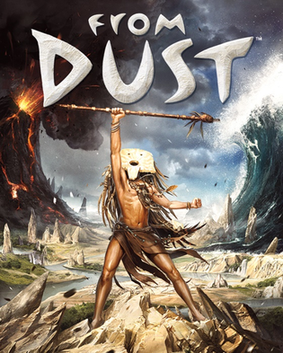
From Dust is a god video game, designed by Éric Chahi and developed by Ubisoft Montpellier. The game was released for Microsoft Windows, PlayStation Network, and Xbox Live Arcade in 2011. Described as a spiritual successor to Populous, the game revolves around The Breath, which was summoned by a tribe to help them seek and recover their lost knowledge. In the game, players, controlling a cursor, can manipulate matter such as lava, soil, and water. Players can help the tribespeople to overcome challenges including finding different totems and overcoming natural disasters. In addition to the story mode, the game features a Challenge mode which offers a shorter, but harder experience.
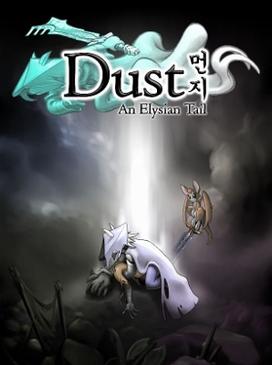
Dust: An Elysian Tail is an action role-playing video game developed by American independent designer Dean Dodrill, published by Microsoft Studios. It was released for Xbox 360 through Xbox Live Arcade in August 2012, and subsequently for Microsoft Windows in May 2013, for Linux and OS X in December 2013, and for PlayStation 4 in October 2014. A version for the Nintendo Switch was announced at E3 2018 and was released in September 2018.
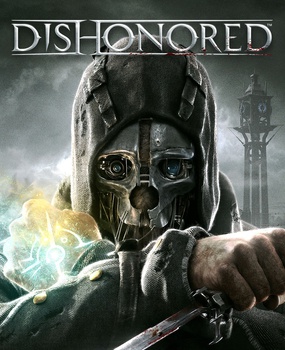
Dishonored is a 2012 action-adventure game developed by Arkane Studios and published by Bethesda Softworks. Set in the fictional, plague-ridden industrial city of Dunwall, Dishonored follows the story of Corvo Attano, bodyguard to the Empress of the Isles. He is framed for her murder and forced to become an assassin, seeking revenge on those who conspired against him. Corvo is aided in his quest by the Loyalists—a resistance group fighting to reclaim Dunwall, and the Outsider—a powerful being who imbues Corvo with magical abilities. Several noted actors, including Susan Sarandon, Brad Dourif, Carrie Fisher, Michael Madsen, John Slattery, Lena Headey and Chloë Grace Moretz, provided voice work for the game.
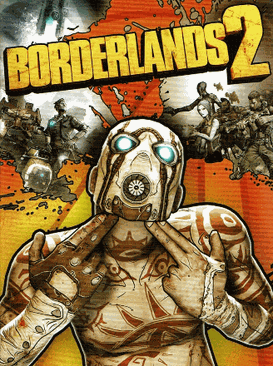
Borderlands 2 is a 2012 action role-playing first-person shooter video game developed by Gearbox Software and published by 2K. Taking place five years following the events of Borderlands (2009), the game is again set on the planet of Pandora. The story follows a new group of Vault Hunters who must ally with the Crimson Raiders, a resistance group made up of civilian survivors and guerrilla fighters, to defeat the tyrannical Handsome Jack before he can unlock the power of a new Vault. The game features the ability to explore the in-game world and complete main missions and optional side quests, either in offline splitscreen, single-player or online cooperative gameplay. Like its predecessor, the game features a procedurally generated loot system which is capable of generating numerous combinations of weapons and other gear.

Atom Zombie Smasher is a real-time strategy game developed by independent developer Blendo Games. In it, the player attempts to rescue as many citizens as possible from an oncoming zombie horde using helicopter rescue units and an array of military units to protect the citizens and defeat the zombies.
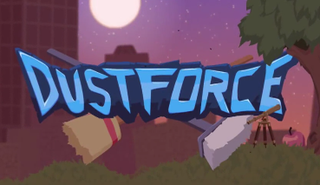
Dustforce is a platform video game developed by Hitbox Team. The game was released in January 2012 for Microsoft Windows via Steam, and Mac OS X through Steam in May 2012. A Linux port was released as part of the Humble Indie Bundle 6. Capcom published the game for the PlayStation 3, PlayStation Vita, and Xbox 360.
The Dark Mod is a free and open-source software first-person stealth video game, inspired by the Thief series by Looking Glass Studios. The game provides the basic framework and tools for more than 170 fan-made missions, including several multi-mission campaigns. The Dark Mod was first released in 2009 as a total conversion mod for Doom 3. Version 2.0 was released in October 2013 as a standalone game using the open-source id Tech 4 game engine.

A Hat in Time is a platform game developed by Danish game studio Gears for Breakfast and published by Humble Bundle. The game was developed using Unreal Engine 3 and funded through a Kickstarter campaign, which nearly doubled its fundraising goals within its first two days. The game was self-published for macOS and Windows in October 2017, and by Humble Bundle for the PlayStation 4 and Xbox One consoles two months later. A version for the Nintendo Switch was released in October 2019.
Volume is a stealth and indie game by Mike Bithell Games. It was released for Microsoft Windows, OS X, and PlayStation 4 in August 2015, and the PlayStation Vita in January 2016. The game uses stealth mechanics inspired by Metal Gear Solid series, allowing the player to plan courses of action to work through levels without being detected by guards, dogs, and automated security turrets to reach specific objectives. In addition to the game's levels, Volume supports user-made levels that can be shared with others. The game presents a modern take on the Robin Hood legend, where a young thief discovers a plot for a military coup involving various heists, and uses a device called "Volume", with the assistance of its artificial intelligence to perform these heists in a virtual manner and broadcasting them to the world at large to make the coup known. The story is presented with the help of voice actors Charlie McDonnell, Danny Wallace, Dan Bull, James Stephanie Sterling, and Andy Serkis.
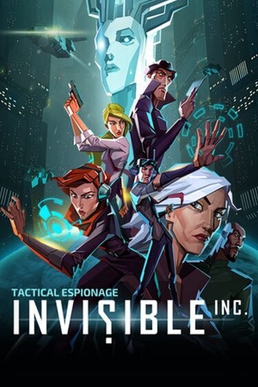
Invisible, Inc. is a turn-based tactics stealth game incorporating elements of roguelike gameplay, by Klei Entertainment. The player acts as the remote operator for an espionage agency that has come under attack from multinational corporations, and directs agents in covert missions, acquiring resources and support in order to enable relocation of the agency's computer system to a safe haven within a limited amount of time.

Lovers in a Dangerous Spacetime is a space shooter video game developed by Asteroid Base for Microsoft Windows, OS X, PlayStation 4, Linux, Xbox One, and Nintendo Switch. The project is part of the ID@Xbox program. The game's title is a reference to the Bruce Cockburn song "Lovers in a Dangerous Time".
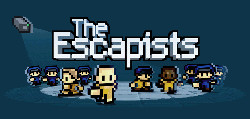
The Escapists is a strategy game played from a top-down perspective. The game was developed by Mouldy Toof Studios and following a Steam Early Access release in 2014, was released in 2015 for Microsoft Windows, macOS, Linux, Xbox 360, Xbox One and PlayStation 4. It was released on iOS and Android in 2017. A Nintendo Switch version of the game containing all downloadable content was released in 2018. The game was launched on the Epic Games Store on 23 September 2021, with the weekly free game campaign of Epic Games. Players assume the role of an inmate and must escape from prisons of increasing difficulty.
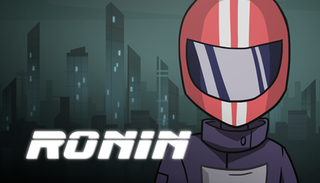
Ronin is a turn-based action platform video game developed by indie developer Tomasz Wacławek and published by Devolver Digital. It was released for Microsoft Windows on 27 May 2015 into Steam Early Access and left it on 30 June 2015. A later update for the game introduced builds for OS X and Linux on 15 October 2015. A PlayStation 4 port of Ronin was released on 1 November 2016.
Enter the Gungeon is a 2016 bullet hell roguelike game developed by Dodge Roll and published by Devolver Digital. Set in the firearms-themed Gungeon, gameplay follows four player characters called Gungeoneers as they traverse procedurally generated rooms to find a gun that can "kill the past". The Gungeoneers fight against bullet-shaped enemies, which are fought using both conventional and exotic weapons. Enter the Gungeon features a permadeath system, causing the Gungeoneers to lose all obtained items and start again from the first level upon death. Between playthroughs, players can travel to an area called the Breach, where they can converse with non-player characters and unlock new items randomly encountered while playing.

Monaco: What's Yours Is Mine is a 2013 stealth video game developed by Pocketwatch Games in which players, alone or cooperatively, perform heists and robberies. Players choose from eight characters, each of whom has a unique and beneficial skill, such as the ability to change appearance or tunnel through walls. Monaco's single-player story is told in four acts from perspectives of different characters. The cooperative mode lets up to four players play together in different locations.

Heat Signature is an action stealth video game developed and published in 2017 by Suspicious Developments, the studio behind 2013's Gunpoint. The player plays as a mercenary who takes on missions around a procedurally generated galaxy in order to liberate space stations. Heat Signature launched for Microsoft Windows on September 21, 2017.


















